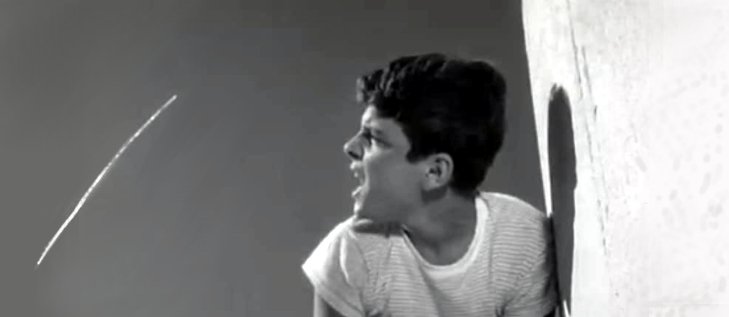Teach Your Children Well
Fourteen years after the Soviet Union detonated its first A Bomb, twelve years after Arch Oboler ushered in the era of nuclear annihilation cinema with Five, four years after Stanley Kramer offered what was supposed to be the last word on the subject with On the Beach, a year after the Cuban Missile Crisis, and a year before Strangelove and Fail-Safe, Frank Perry made a little no-budget, no-frills picture that said more about the real psychological toll of the Cold War than any other film in the very crowded subgenre of nuclear annihilation films, and said it more powerfully. And all without a single mushroom cloud. Not surprisingly, 1963’s Ladybug, Ladybug, his existentialist bummer of a film was ignored at the time and remains all but completely lost and forgotten today.
Perry’s first feature, 1962’s David and Lisa, was a sincere and emotional melodrama about a mentally unbalanced teen who finds true love in the asylum. Things took a much bleaker turn in his second feature, though given the prevailing atmosphere you can understand why.
The plot is deceptively simple, and at times can feel like an extended episode of The Twilight Zone. When the Civil Defense alarm begins blaring unexpectedly in the main office of a small rural Middle American grade school, no one knows what to make of it. The scheduled weekly alarm test had taken place a few hours earlier, which means this new siren is either a false alarm resulting from some mechanical glitch, or an honest-to-god warning the missiles were on their way and would strike in less than an hour. Tensions are only ramped up when all the phone lines to all the authorities who could set the matter straight are tied up. There was nothing about the impending apocalypse on the radio, but maybe word simply hadn’t gotten out yet.
Opting to err on the side of caution, the school principal (the great William Daniels in his film debut, the first of countless stern, humorless administrator roles) decides they should just send the kids home.
It was a Cold War drill as common and well-rehearsed as duck and cover. Given they were in a rural area and many of the parents were at work, the students were broken into groups depending on where they lived, and a teacher walked with them, making sure each kid got home safely. When the drills were practiced prior to this, once everyone got home they turned around and went back to school to get on with the rest of the day. In this case, given no one knew exactly what was happening, that last part wasn’t scheduled.
That’s essentially the film. Shot simply and economically in black and white, the story unfolds in nearly real time, and we see much of what transpires through the eyes of the students. At first assuming it to be just another drill like any of the others, they soon enough glean from the nervous and sullen behavior of the adults around them that something more may be up, that this might actually be the war they’d always been warned about. The chatting on the way home along the desolate back roads soon shifts from standardized tests and assignments to—again taking their cue from their parents and other adults—fallout shelters, radiation levels and potential survival statistics.
As the slow minutes pass and the tension grows, by the time many of them reach their homes the students are in a panic. As they try to explain to their parents the world is about to end, their understandable fears are met with dismissal, derision, and punishment for trying to scare people with crazy stories. But these of course are stories that have been fed them their entire lives, and when they try to feed them back to the adults who told them the stories in the first place, what do they get?
The adults at the school, meanwhile, were perfectly willing to believe the bombs were falling the minute the siren went off. Later when they learn differently, they were perfectly willing to accept just as easily everything was fine, and with no more evidence than the siren had provided.
At the same time, a small handful of kids who hunker down in one girl’s fallout shelter to await the inevitable, again taking their cues directly from adults, immediately begin laying down strict and contradictory rules, struggling for power, turning on each other, and locking out young classmates who are just as terrified as they are. It all culminates in a shocking and devastating close that has nothing at all to do with the incineration of the planet, and everything to do with the deadly power of State-Sponsored paranoia.
The brilliant move Perry makes, and what sets Ladybug, Ladybug apart from most other films within the nuclear war subgenre, is that he keeps the camera tightly focused on the situation at hand, the walk home from school and what’s waiting in a few of the households. What’s actually happening in the rest of the world is kept at a deliberately obscure distance. The missiles may or may not be coming. We don’t know, and Perry isn’t saying. We remain as in the dark as the teachers and students. All we can do is speculate, no matter how pointless and dangerous speculation may be.
It’s a film, at heart, about paranoia and gullibility, our eager willingness to believe what we are told and taught, our willingness to play by the rules laid out in a world gone completely mad. Whether or not the bombs are falling simply doesn’t matter. Even if they aren’t, the results will be tragic, if not more so.
by Jim Knipfel

